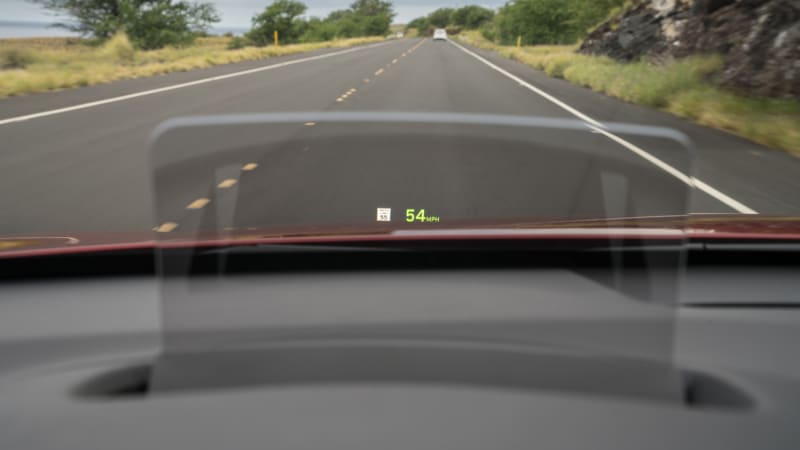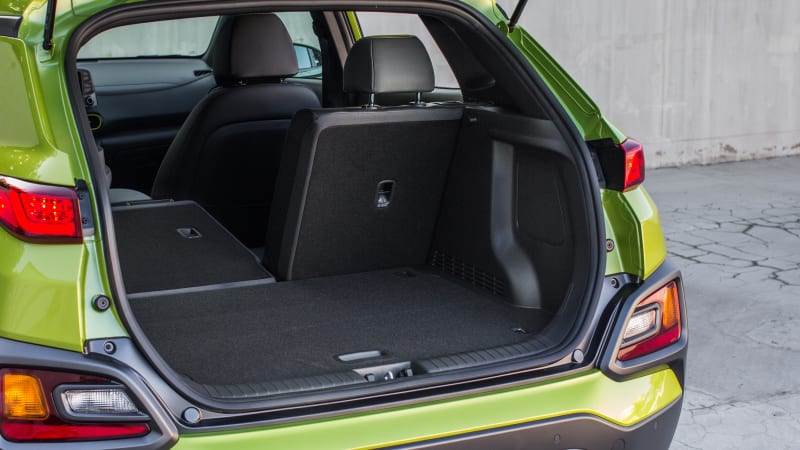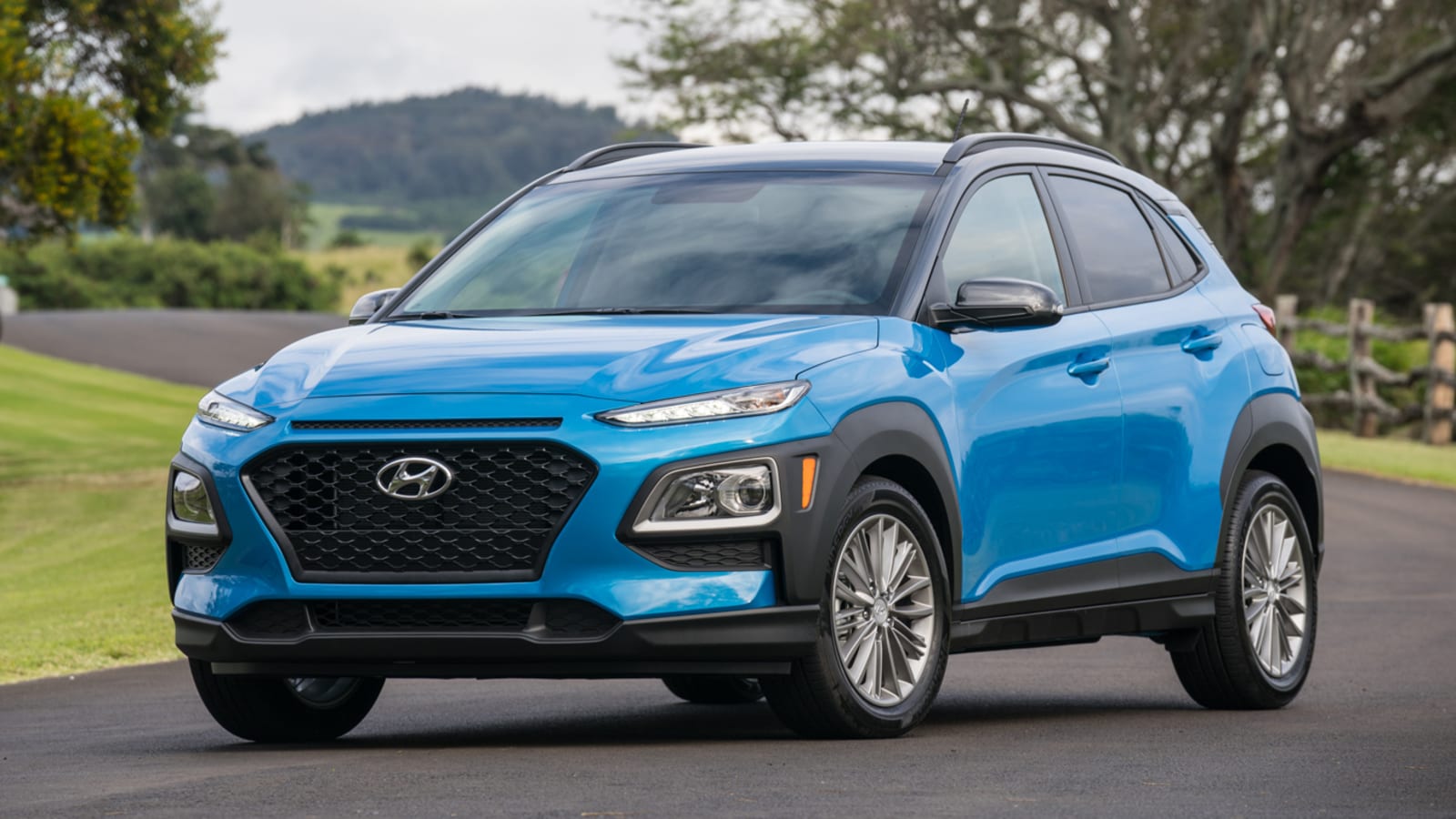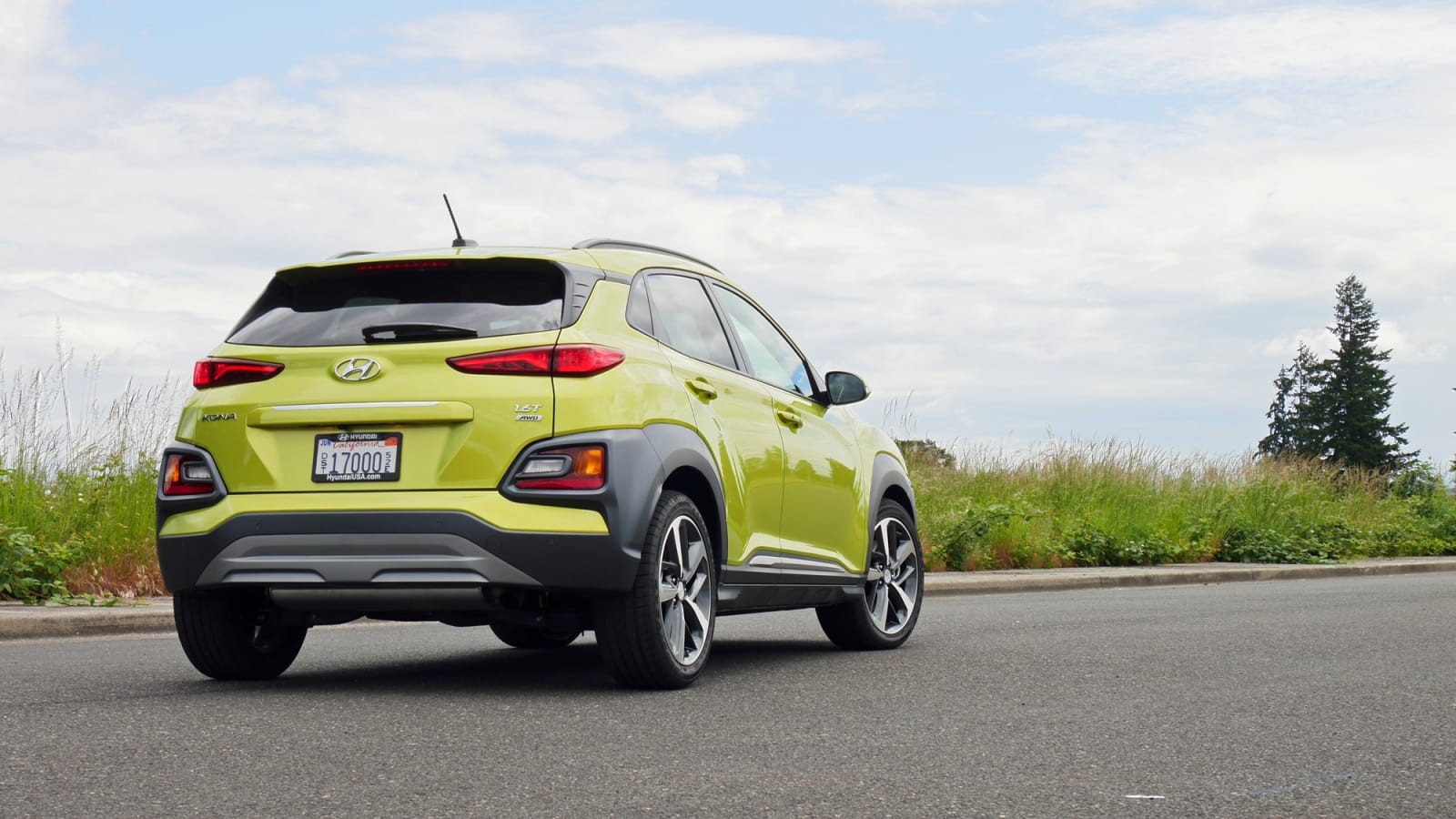So, a subcompact crossover can be fun to drive. It didn’t seem possible before the Hyundai Kona came along, but sure enough, this funky little urban runabout managed to pull it off … and still does. Its available turbocharged engine that blows away most competitors certainly helps. So too does its excellent Kona Electric variant. Yet, even the most basic 2021 Hyundai Kona with its plain-jane 147-horsepower engine is an engaging and surprising sprightly car to drive. The distinctive styling certainly adds to the fun as well.
Clearly, the Kona can make an emotional connection better than most of its competitors. It’s also reasonably priced, is packed with features, has a generous warranty and offers all-wheel drive, so there’s some substance behind the fun. Still, it’s one of the least practical subcompact crossovers (the cargo area in particular is quite small) and if you’re looking for that tall, commanding view of the road, you won’t find it here. That limits its broad appeal, but if you’re looking for a fun and funky little crossover to drive around town, it’s tough to beat.
What’s new for 2021?
A new Night Edition debuts, following a trend of gloss black wheels and trim applied liberally to a car’s exterior and interior. Hyundai has eliminated the Sunset Orange and Lime Twist paint colors, along with their corresponding interior accents. This pop of color was one of the things that helped differentiate the Kona, though we suppose if Hyundai killed it, customers weren’t as keen on color as we are (the existence of the Night Edition certainly backs that up).
Note that there will be significant updates made for the 2022 Kona, including a handsome front-end redesign and the new, sporty Kona N Line.
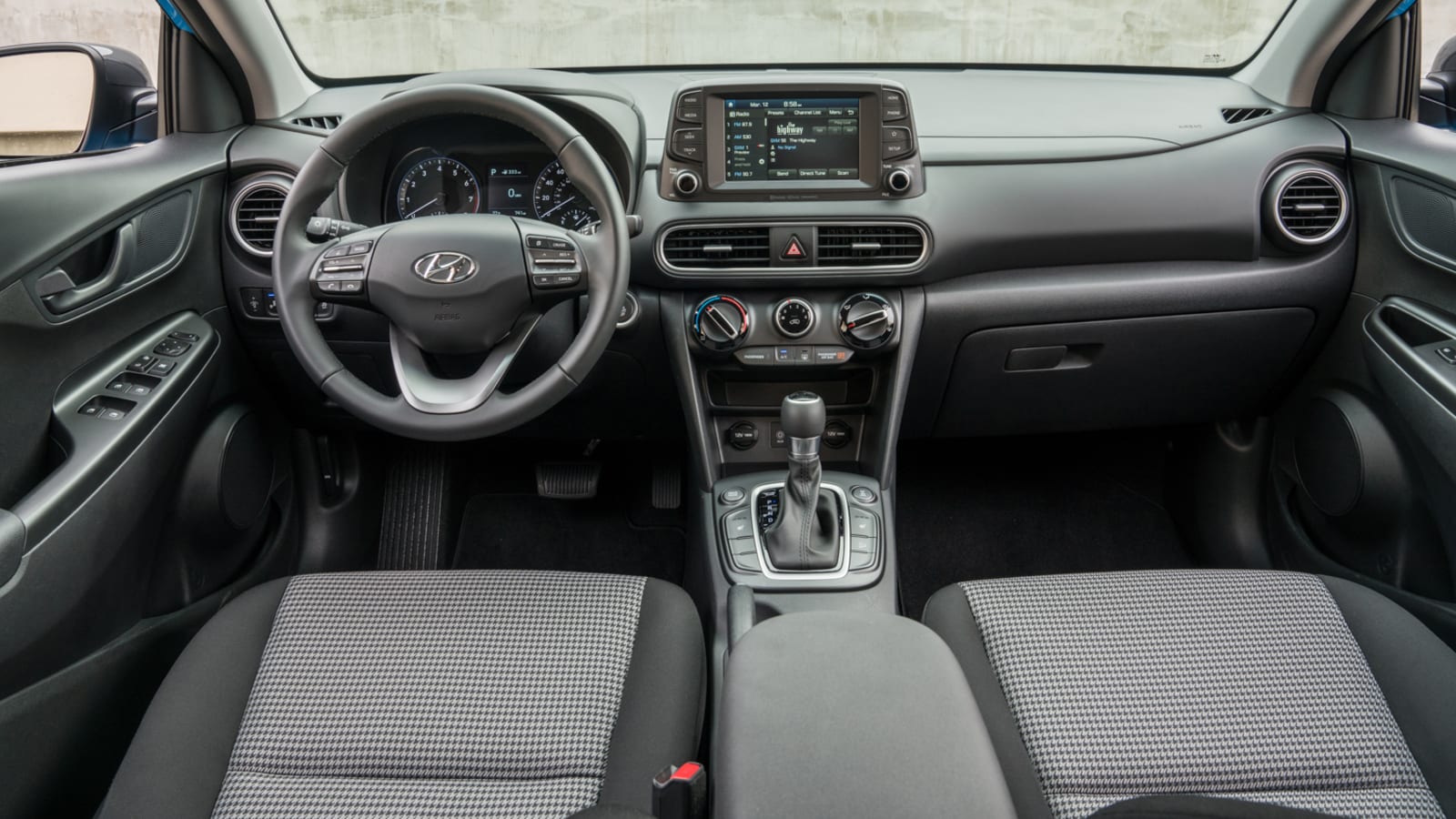
What’s the Kona interior and in-car technology like?
Most interior plastics are unremarkable, even for this segment. The design itself also isn’t the most interesting, but there are at least varying textures that help break up the monotony and standard houndstooth cloth upholstery. Sadly, the Lime Twist and Sunset Orange accents have been discontinued. The Kona Electric stands out with lighter dash and door colors, including an available two-tone color scheme of creme and blue. It also has a unique rising center console with an electronic shifter and different storage (photo below).
With either design, the low dash offers good visibility, the steering wheel sufficiently adjusts, and upper trims benefit from a power driver seat that provides more adjustability than most in the segment. The driving position is also higher than a car, but we wouldn’t say you get the “commanding view” of the road like you’d get in a bigger crossover.
One of the Kona’s major perks is the easy-to-use infotainment system. As in other Hyundai products, it combines a touchscreen, plenty of physical shortcut buttons, and importantly, physical volume and tuning knobs. The user interface isn’t the prettiest, but it’s easy to read and comprehend, and it responds quickly. Apple CarPlay and Android Auto are standard features on all models. Also offered is a head-up display, an unusual feature for this segment and price point. It’s a color unit that displays on a clear plastic panel that rises up on the dashboard rather than the windshield.
How big is the Kona?
The Hyundai Kona is on the small side of the subcompact crossover class, which ranges from fairly tight vehicles such as the Kona and the Mazda CX-3 to particularly spacious vehicles such as the Subaru Crosstrek, Nissan Kicks and Chevrolet Trailblazer. It’s one of the shortest in overall length, and that’s reflected in particularly tight rear legroom. Your backseat passengers should at least be happier than they’d be in the even more cramped CX-3 or the claustrophobic Toyota C-HR.
Cargo space is also among the smallest in the class. According to the specs, there’s about 19 cubic feet of space behind the Kona’s raised back seat. That’s only 2 cubes less than the Subaru Crosstrek, which isn’t much on paper, but in practice, the difference is immense. Its cargo area just isn’t as deep or useful. We managed to fit too fewer midsize suitcases in the Kona than in the Crosstrek or Kicks. We even managed to fit more stuff in the smaller Hyundai Venue thanks to its clever two-level floor. Still, the Kona is better than a CX-3 or C-HR.
What are the performance and fuel economy?
This section is typically pretty simple for other subcompact SUVs, but not so the Kona as it’s available with two turbocharged gas engines and an electric powertrain.
The entry-level engine offered on the SE and SEL trim levels is a 2.0-liter naturally aspirated inline-four that makes 147 horsepower and 132 pound-feet of torque. It’s paired with a conventional six-speed automatic, and can be had with either front-wheel or all-wheel drive. Some competitors don’t offer AWD at all (C-HR, Kicks, Kia Soul). Fuel economy is 27 mpg city, 33 highway and 30 combined with FWD. It lowers to 25/30/27 with AWD, which is a considerable drop these days.
Moving up to the Night Edition, Limited and Ultimate trim levels brings a turbocharged 1.6-liter inline-four making 175 hp and 195 lb-ft of torque that blows away nearly every competitor. This engine comes with a seven-speed dual-clutch automatic transmission and is again available with either front-wheel or all-wheel drive. Despite a big difference in power, both engines return nearly the same fuel economy. The turbo gets 28/32/30 with FWD and 26/29/27 with AWD.
But for max efficiency, there’s the 2021 Hyundai Kona Electric, pictured below. Its single electric motor produces the equivalent of 201 hp and 291 lb-ft of torque. It’s front-wheel-drive only. Electric range is a tremendous 258 miles and its efficiency in general is comparable to the Chevrolet Bolt, and just a bit better than the Kia Niro Electric and Nissan Leaf.



